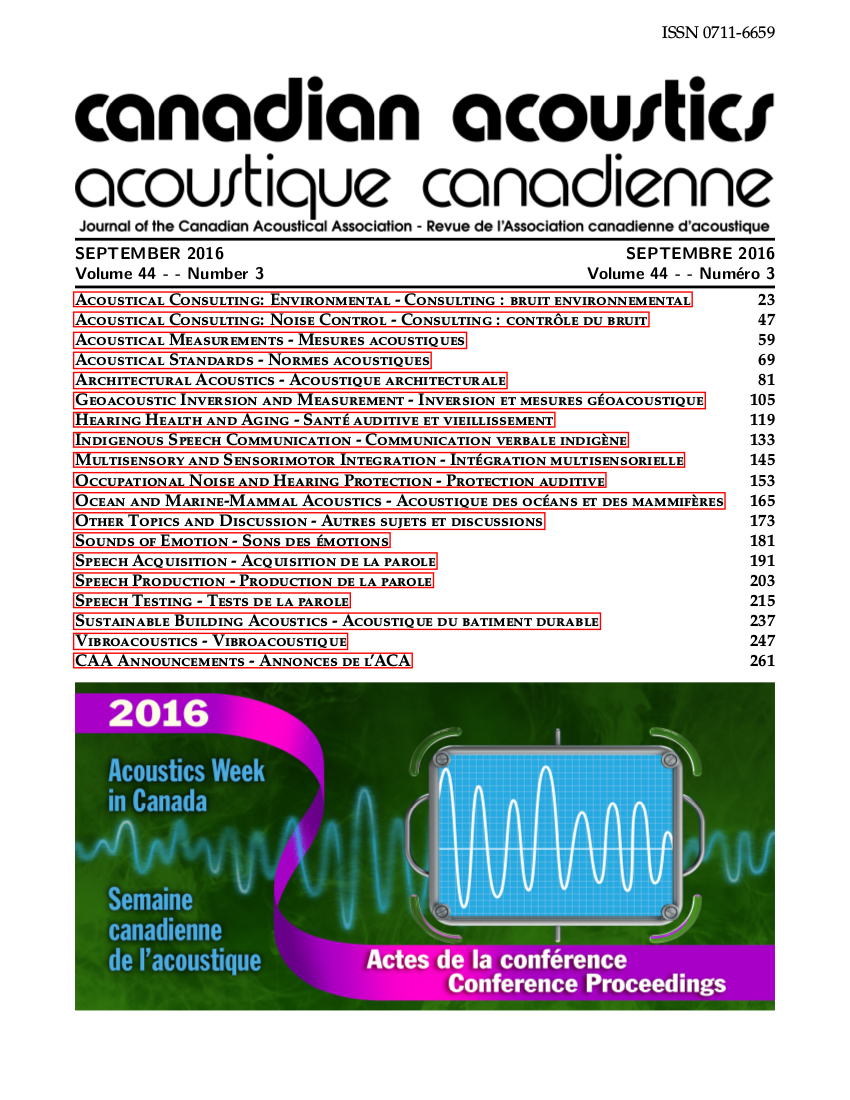Changing Standards for Building Acoustics Regulation
Résumé
A new approach to the control of sound transmission between adjacent units in multi-family residential buildings is among the changes in the 2015 edition of the National Building Code of Canada (NBCC). Derivative provincial codes are expected to follow this approach. The design objective has changed from a minimum direct STC for the wall or floor/ceiling assembly separating adjacent units to a requirement for the Apparent Sound Transmission Class (ASTC) that includes both direct and flanking transmission. The required design procedure uses data from conventional laboratory measurements (ASTM E90) of direct transmission through wall or floor/ceiling assemblies combined with measurements of flanking transmission (conforming to ISO 10848) as inputs for a calculation procedure based on ISO Standard 15712 Part 1 (1995). Meanwhile, ISO committee TC43/SC2 is revising the calculation standard and bringing its number into alignment with the corresponding European standard EN 12354-1. This paper focuses on explaining the technical intent and form of the new Building Code requirements, and how these are supported by the old and new versions of the ISO calculation standard.Fichiers supplémentaires
Publié-e
Comment citer
Numéro
Rubrique
Licence
Author Licensing Addendum
This Licensing Addendum ("Addendum") is entered into between the undersigned Author(s) and Canadian Acoustics journal published by the Canadian Acoustical Association (hereinafter referred to as the "Publisher"). The Author(s) and the Publisher agree as follows:
-
Retained Rights: The Author(s) retain(s) the following rights:
- The right to reproduce, distribute, and publicly display the Work on the Author's personal website or the website of the Author's institution.
- The right to use the Work in the Author's teaching activities and presentations.
- The right to include the Work in a compilation for the Author's personal use, not for sale.
-
Grant of License: The Author(s) grant(s) to the Publisher a worldwide exclusive license to publish, reproduce, distribute, and display the Work in Canadian Acoustics and any other formats and media deemed appropriate by the Publisher.
-
Attribution: The Publisher agrees to include proper attribution to the Author(s) in all publications and reproductions of the Work.
-
No Conflict: This Addendum is intended to be in harmony with, and not in conflict with, the terms and conditions of the original agreement entered into between the Author(s) and the Publisher.
-
Copyright Clause: Copyright on articles is held by the Author(s). The corresponding Author has the right to grant on behalf of all Authors and does grant on behalf of all Authors, a worldwide exclusive license to the Publisher and its licensees in perpetuity, in all forms, formats, and media (whether known now or created in the future), including but not limited to the rights to publish, reproduce, distribute, display, store, translate, create adaptations, reprints, include within collections, and create summaries, extracts, and/or abstracts of the Contribution.


